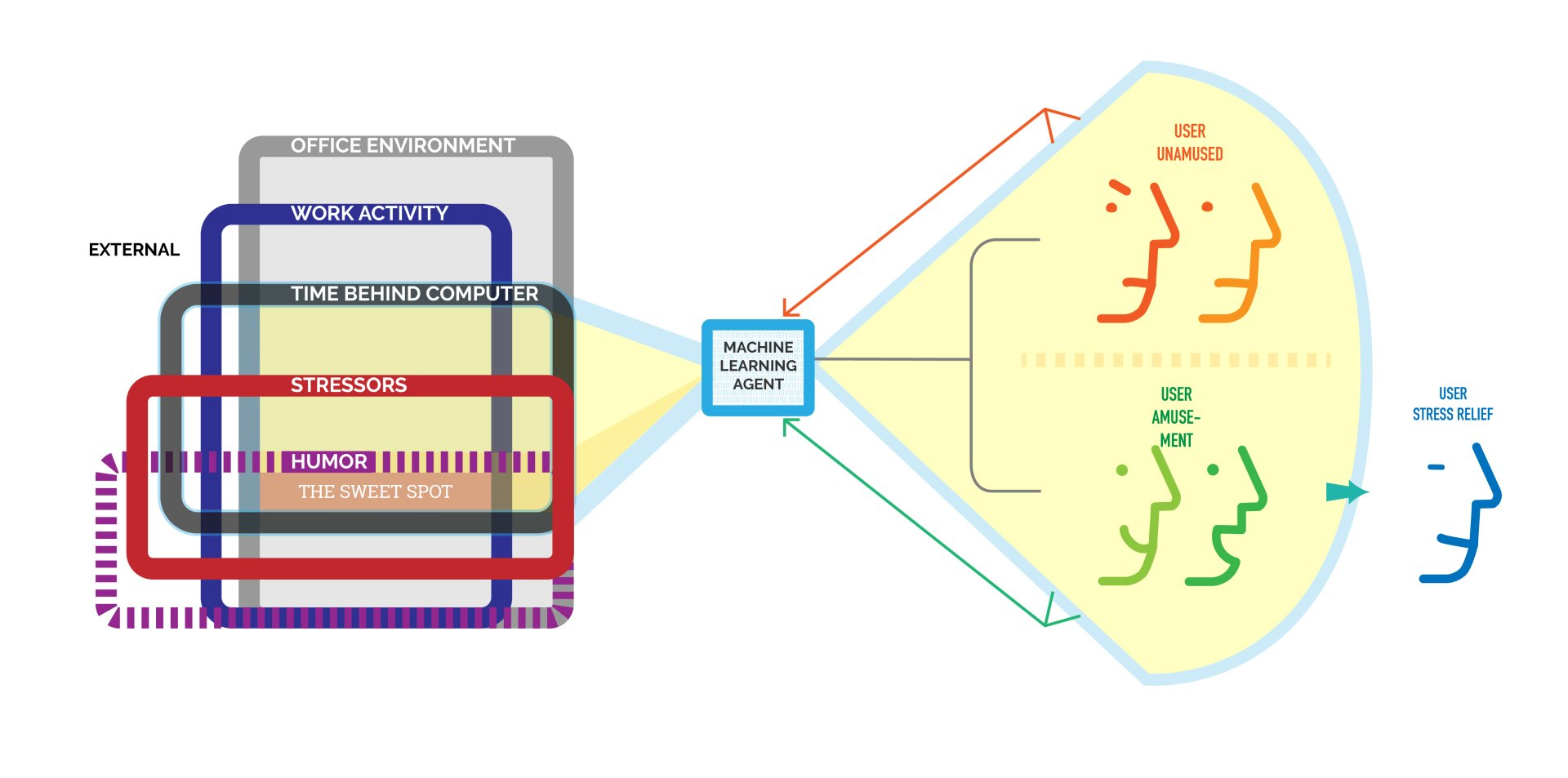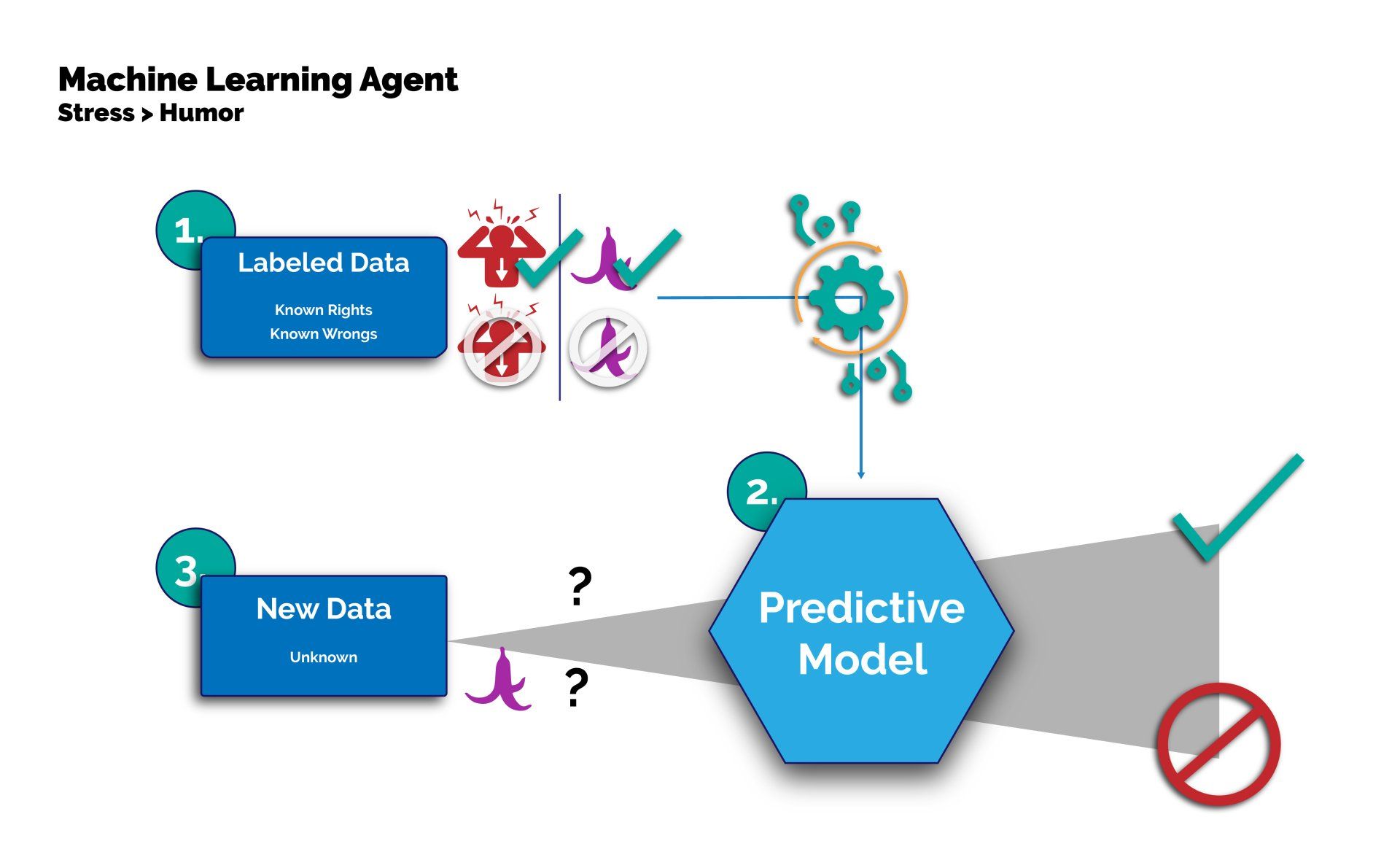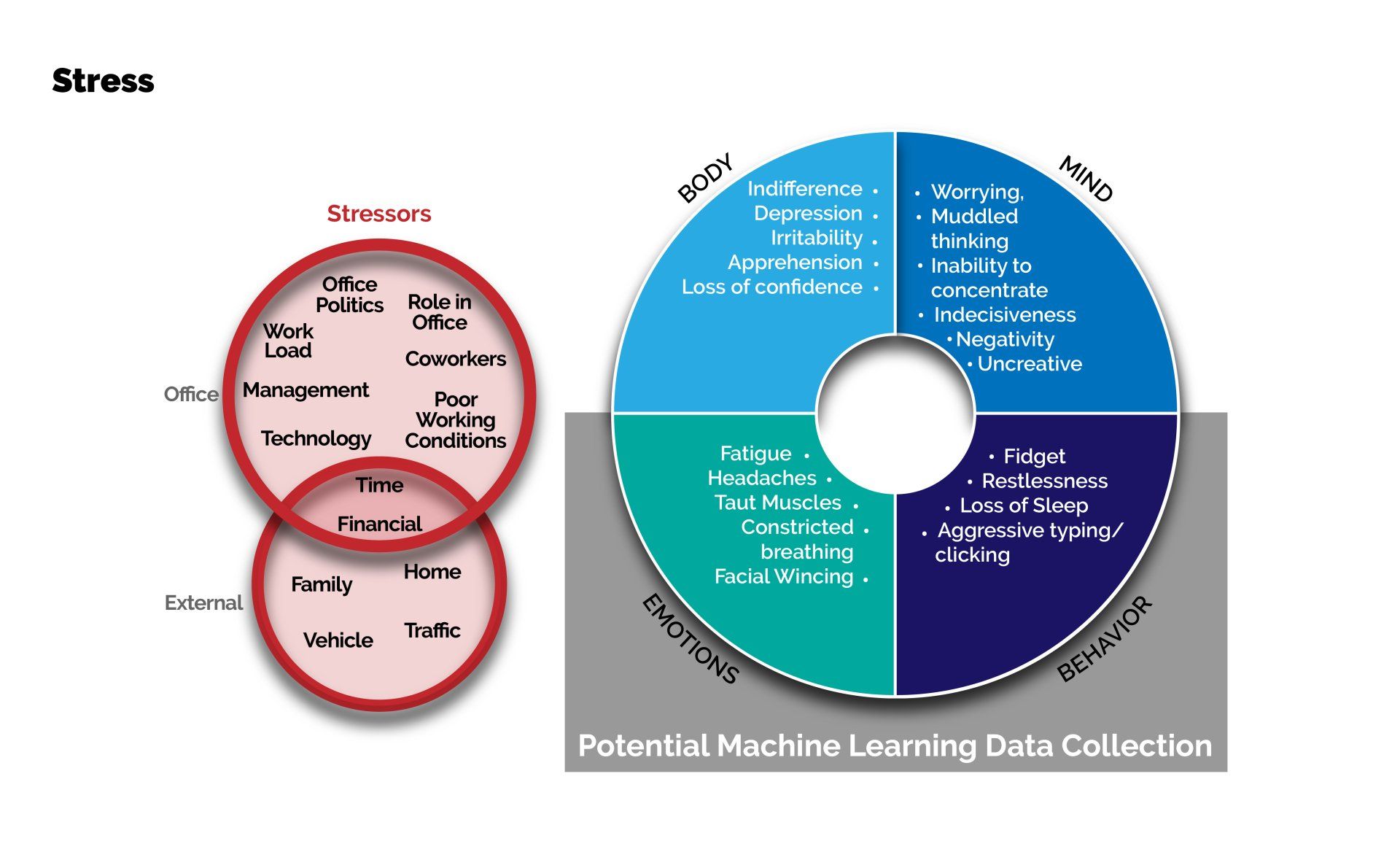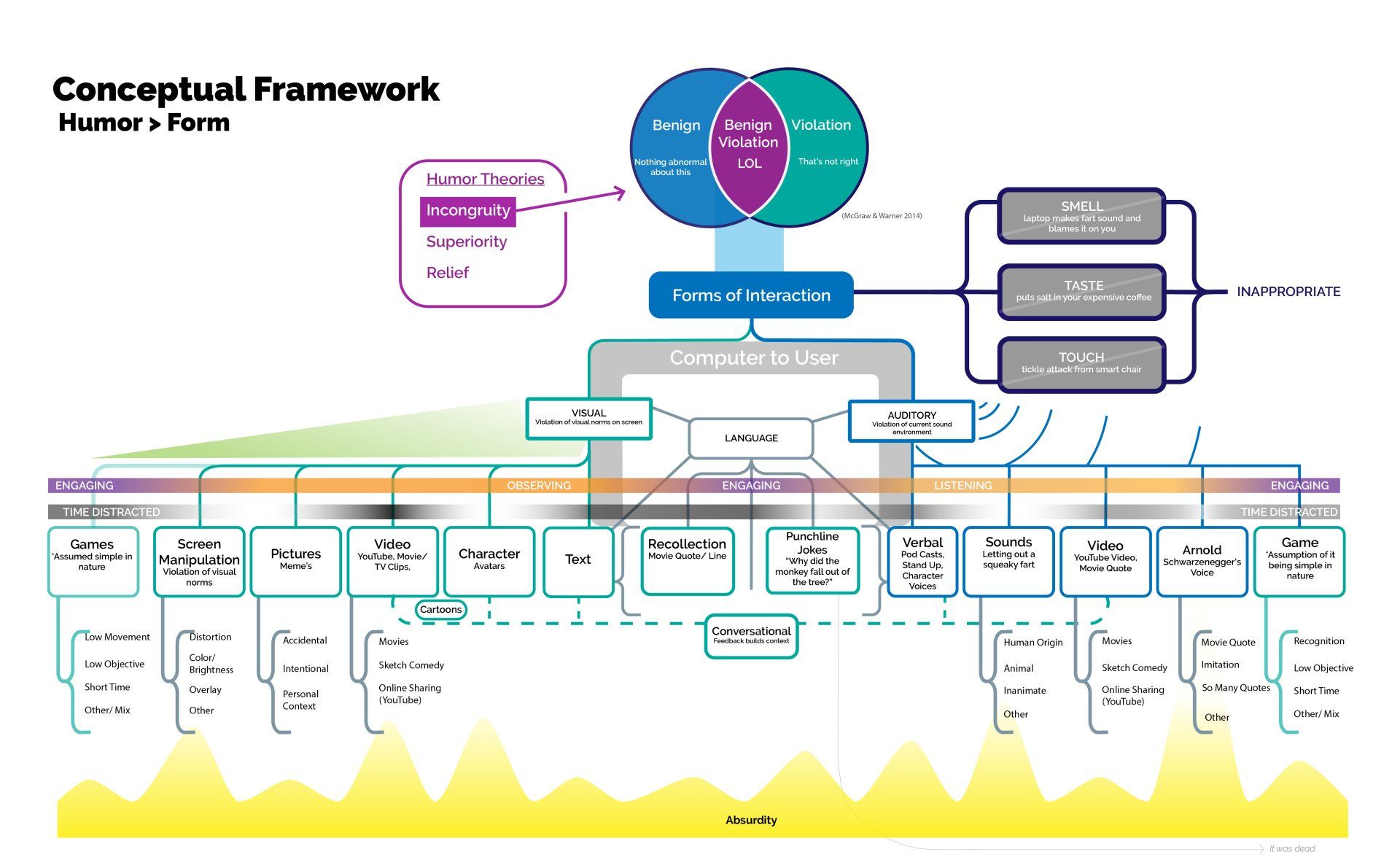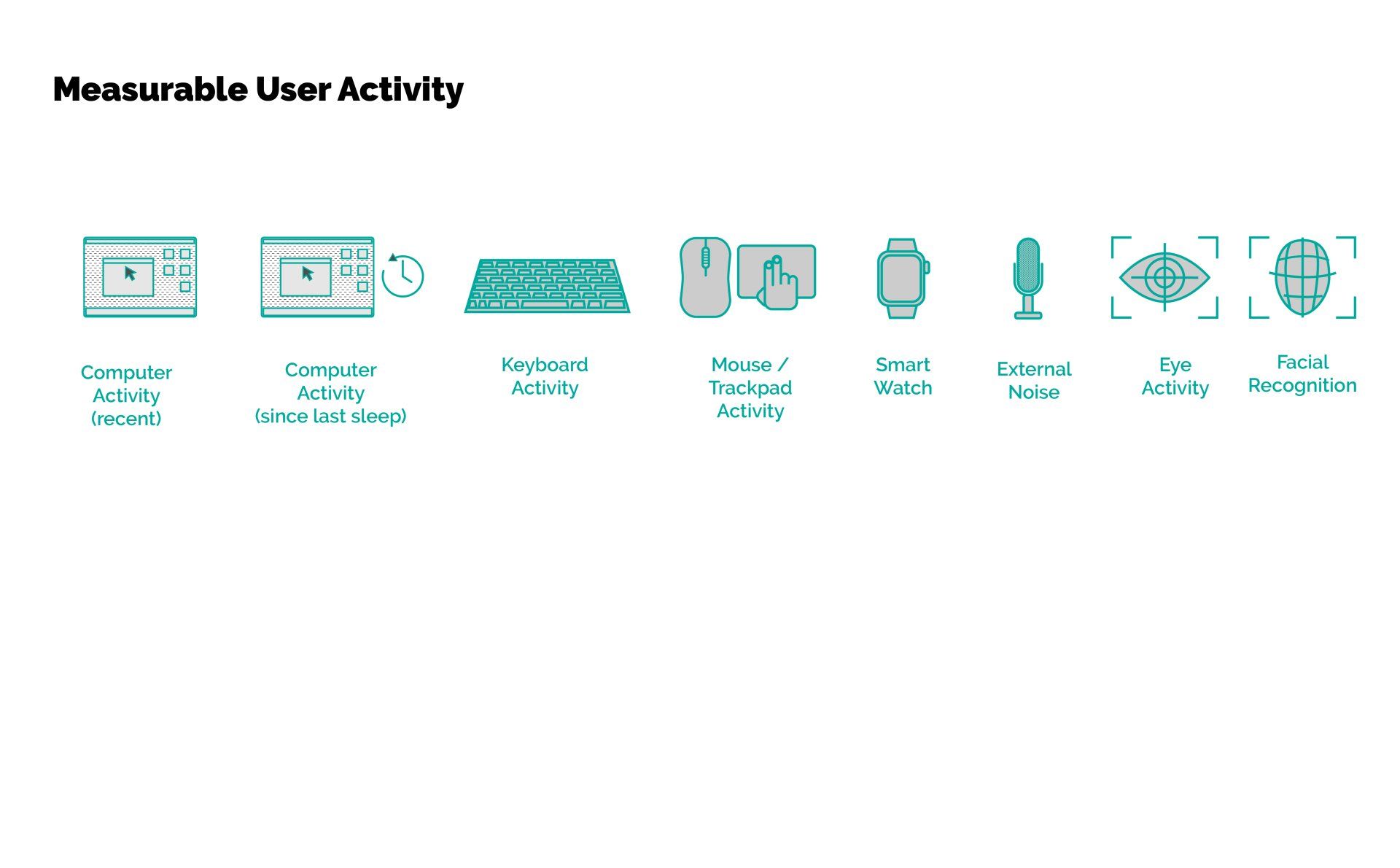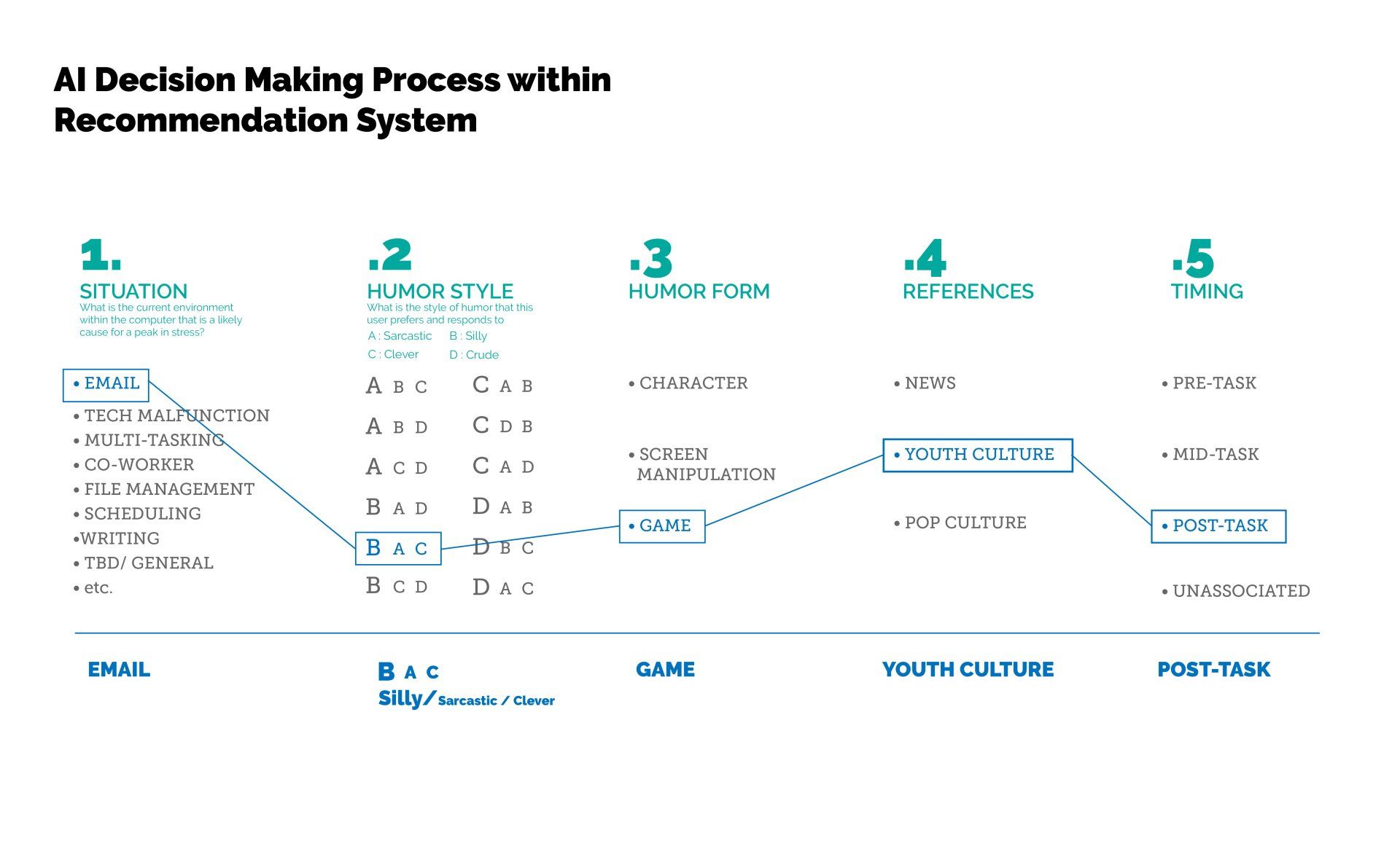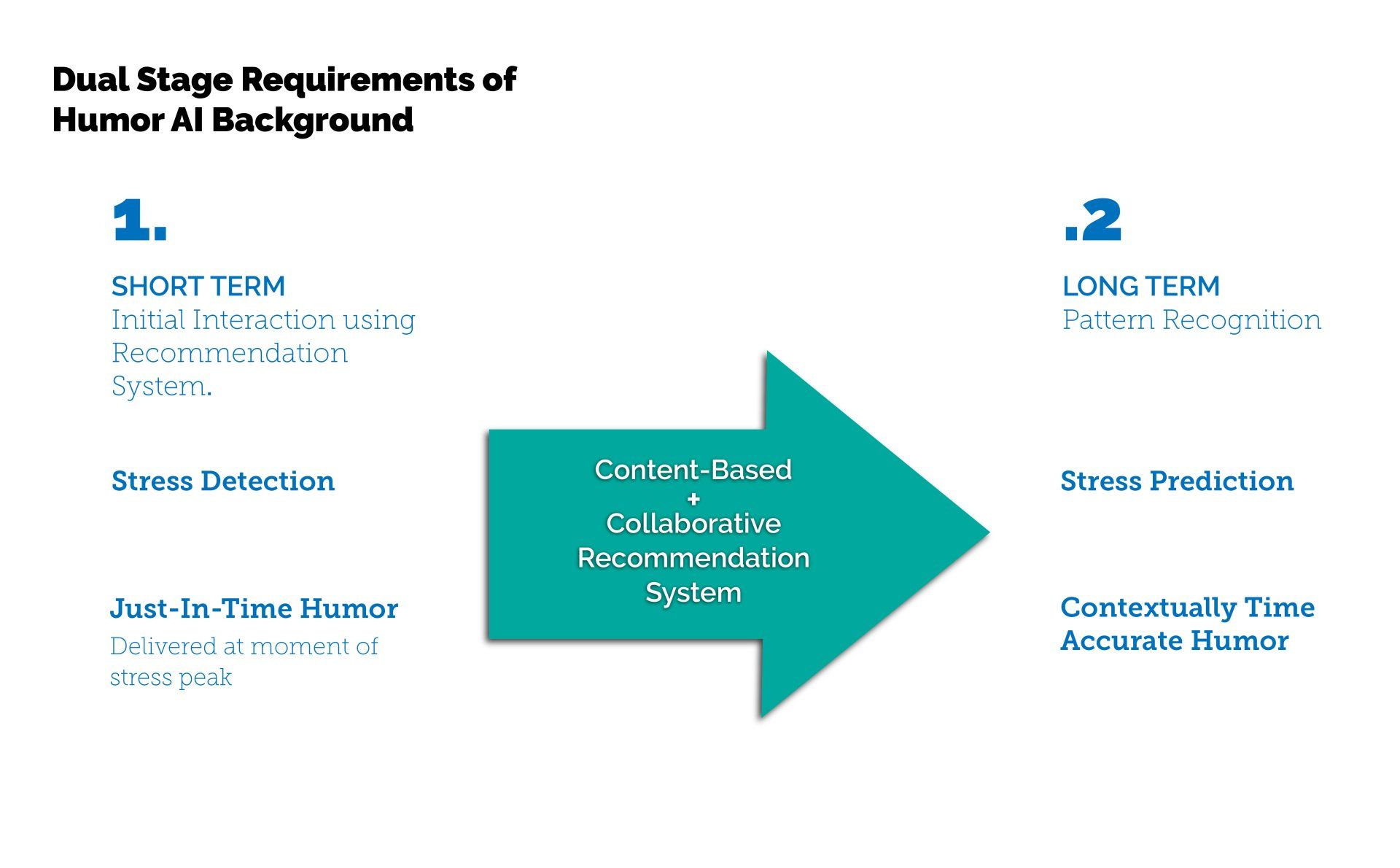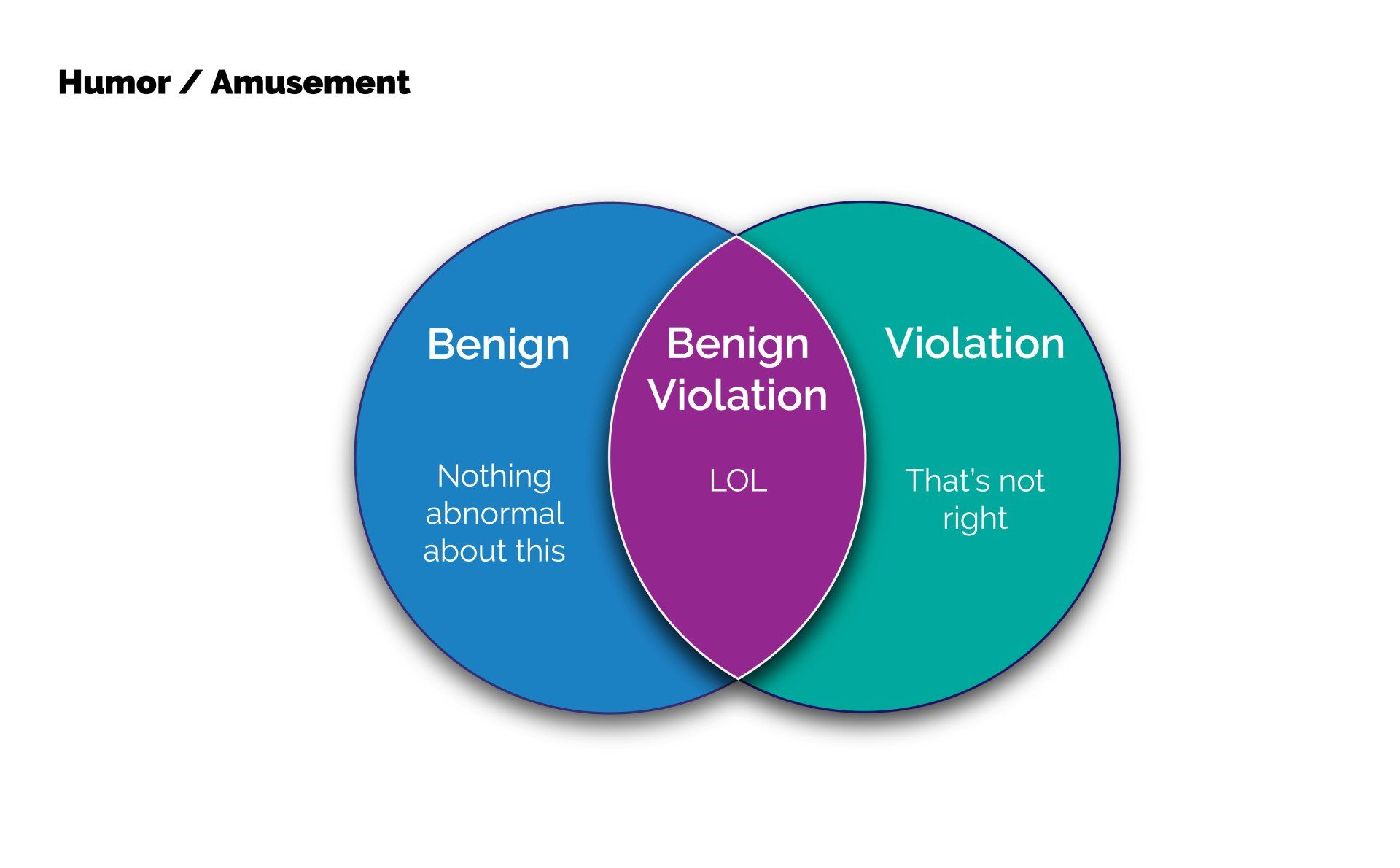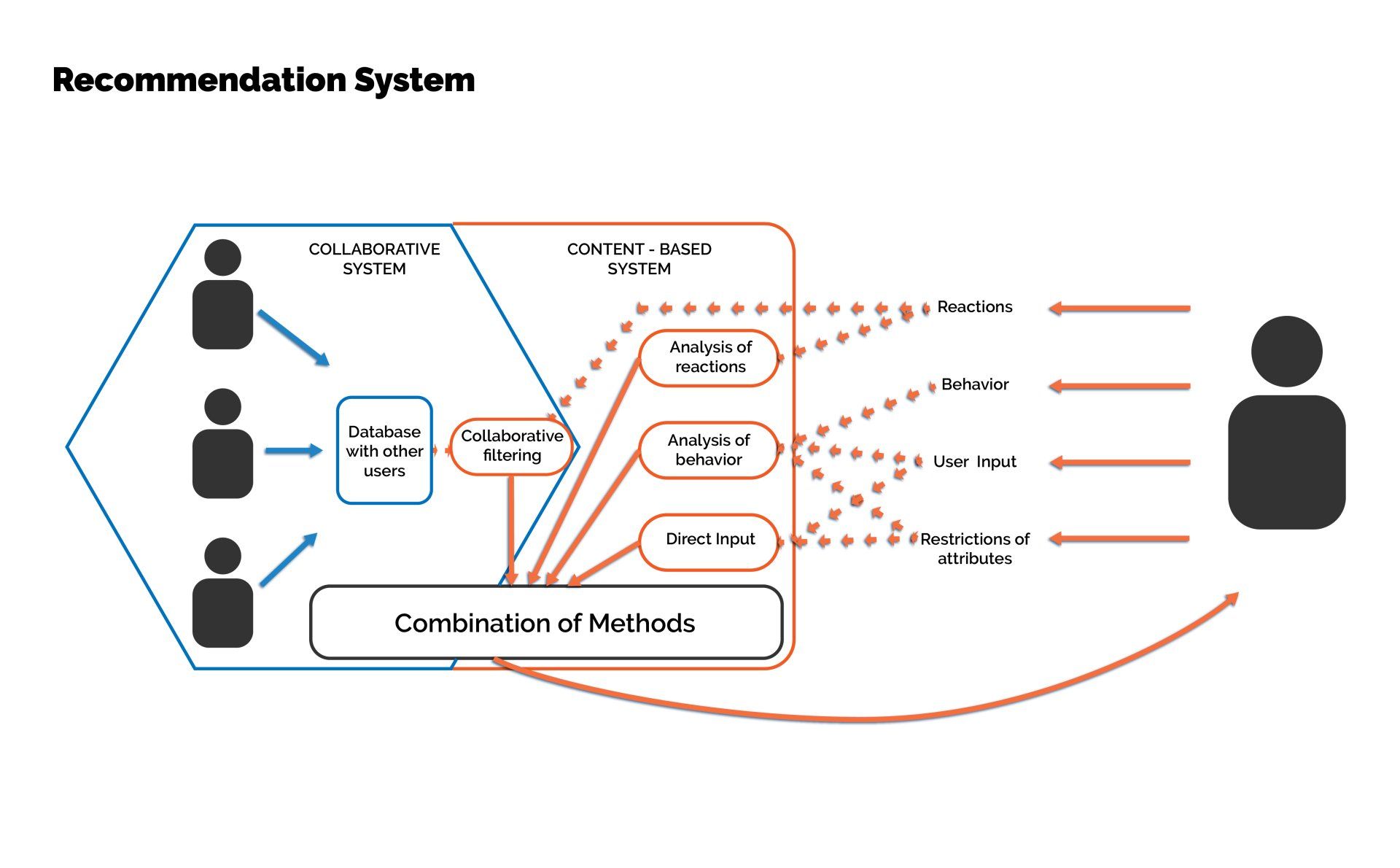can an ai learn
to make you laugh?
to make you laugh?
How can computers for professionals in shared work environments inject humor into the user experience and interface to reduce stress and maintain workflow?
the goal
I wanted to explore how machine learning could be designed to create effective humor. This research heavy task required addressing many unanswered questions before designing for the big question...
(the remaining 2 minutes of the video, at bottom of this page, explain the final product)
areas of interest
- Stress via Work & Tech
- ML Stress Detection
- Humor Environments
- Humor Theory
- Humor Therapy
- CUI & Digital Interaction
research methods and process
gathering academic insight
I gathered current knowledge and research surrounding each of the topics.
- Humor in Environments
- Therapy with Humor
- Humorous CUI’s & Digital Interaction
- Stress via Work & Tech
- ML Stress Detection
I synthesized the findings to inform the next set of questions, frameworks and design exploration..
Insights:
- Elevated stress is harmful short and long-term
- Computers are highest source of stress at work
- Laughter has many health benefits
- Smiling/inward laughter improves workflow
- Five conditional factors for effective humor
- context
- style
- form
- reference
- timing
Findings:
- Many theory about WHY things are funny
- No theories about HOW to create humor
- Humor varies by culture even in close proximity
visualizing the research frameworks
Diagraming my findings visually in maps and frameworks is important. It explains their relation to each other clearly to the reader and the flow of concepts as I developed conclusions. It is an accessible foundation to reference the research.
humor improves with the company of others
Humor and laughter happen more fluidly in a social setting. I met with multiple groups to brainstorm humorous, silly, and playful ways to address stressful situations on a computer. In some groups we played games to grease the funny gears.
Findings:
- Jokes required backstory or familiarity
- Characters and voice were common elements
- The funniest ideas were the least appropriate
Wish I Had:
- Used voice transcribing app for all meetings
- Come up with more specific activities to steer the conversation and avoid unusable material
existing practices of on-screen stress management and humor
I examined precedents from each of four topics, that reflected on a potential application of the stress, humor and A.I. research performed.
Insights:
- Stress mgmt and humor therapy apps utilize:
- light hearted illustrations and characters
- anxiety and depression treatment tactics
- required a time investment with questionnaires and long activities
- Humor apps, widgets and games quickly became predictable
watching pros prime the audience and time the punch
Catching moments of spontaneous humor is virtually impossible to predict. To observe humor and laughing in real time I had to go to comedy clubs and improv theater, where there was the possibility of a joke "flopping".
Findings:
- Stand-up comedians used stories and voices to paint a picture for their audience.
- When expectation for a joke built up, a violation of the situation received more laughs.
- Allowing time for audience to laugh was very effective.
- Impersonations and
characters used in improv received
consistent light
laughter.
building personas with unique stressors and sense of humor
To paint the full picture and maintain consistency I created two office worker personas with different types of stress and unique humor tastes .
- Persona Stressors by Stage
- Daily Activity Patterns
- Personal Cultural References
- Humor Profiles
The personas were placed in scenarios where they became stressed. The potential interaction and experience was then journey mapped. To show how variation might progress for unique humor preferences over time, I designed humor interventions at three stages of development nine months apart for two personas.
- 18 humor studies.
- 9 for each persona.
- 3 in each of the 3 format categories
- language
- games
- characters
The individual humor AI became much more in tune with the user's stress cycles and indicators for predicting when a humor injection would be most effective.
building humor studies
The next step was to develop what these humor injections would look like, and show how the ML Humor agent would evolve and improve over time.
The humor designs were explainable within ML criteria, safe for work, relatable, fresh and brief.
Reflections on making humor :
- funny concepts don't always translate to the screen well
- coming up with funny material is very humbling, because jokes tank sometimes
- a laugh now means a chuckle or smirk later
- suffer from over-thinking
- benefits significantly from discussion and riffing
Just as we have AI technology that can see far more from one medical image than the most experienced doctors, I believe AI can eventually be absolutely, sidesplitingly, hilarious....eventually.
You can't teach or learn funny. You have step in it and get it all over your shoe.

